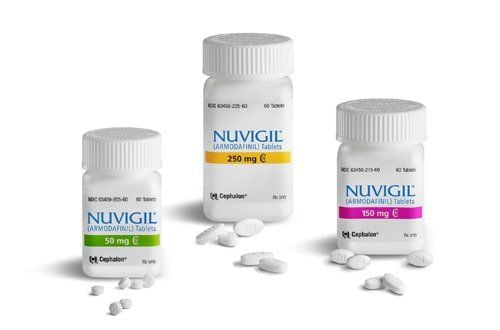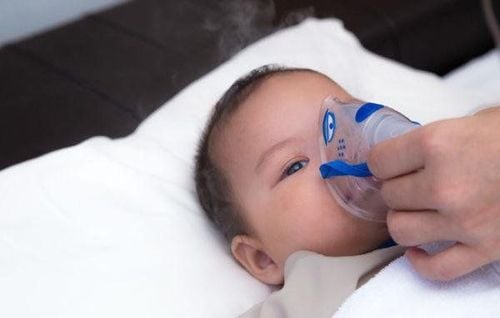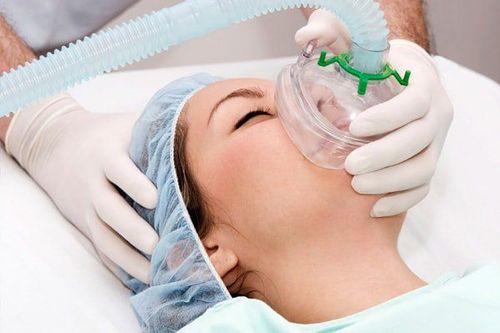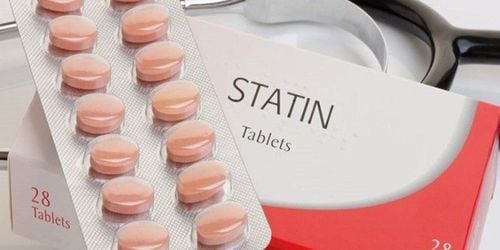This is an automatically translated article.
4 signs of sleep apnea usually maintain an open airway when awake, but when deep sleep encounters a blockage, leading to interrupted deep sleep due to increasing airway obstruction and stimulate the patient to wake up to go into light sleep. This awakening helps the patient's airways to return to normal and is often accompanied by a long inspiration to compensate for the lack of oxygen.
1. Who often suffers from sleep apnea? Signs of sleep apnea can occur at all ages, in which it is more concentrated in middle-aged men. Besides, this abnormal state of breathing during sleep often appears in some cases such as:
Obesity, overweight; Abnormal upper respiratory tract structure, including enlarged tonsils, small jaw, large tongue...; Excessive alcohol use; Using tranquilizers; A family history of sleep apnea increases the risk.
2. Signs of Sleep Apnea Patients with sleep apnea may have the following symptoms:
Snoring: This is the most common symptom of this condition. In addition, there may be panting, panting... Snoring is easiest and loudest when the patient is lying on his back and decreases when lying on his side; Feeling tired all day: People with sleep apnea often feel fatigued, reduced concentration, impaired memory, mood swings, or irritability; Daytime Drowsiness: Patients with sleep apnea often feel sleepy during the day, even while working or driving; Headache upon waking: Occurs due to a decrease in oxygen and blood flow to the brain during the night. In addition to the above-mentioned signs of sleep apnea, your doctor may prescribe polysomnography to increase accuracy in diagnosis. Polysomnography is considered the gold standard in diagnosis through the use of equipment to record all physiological changes that occur during sleep. The patient will be fitted with sensors on several positions such as the head, face, chest, legs, fingertips to record some abnormalities that occur during sleep. The polysomnography machine will record electroencephalogram, electrocardiogram, eye electromyography, chin muscles, leg muscles, blood oxygen saturation, respiratory ventilation, respiratory muscle movements and even snoring sounds of the patient. patient. The advantage is that polysomnography is completely painless.
Watch now: Sleep apnea syndrome: Causes of drowsiness while driving

Dấu hiệu bệnh ngưng thở khi ngủ có thể xảy ra ở tất cả độ tuổi
3. Complications of sleep apnea syndrome In general, people who often have sleep apnea have a good prognosis if they are treated promptly and effectively. However, if not properly diagnosed and intervened, it can lead to a number of complications as follows:
Sleep apnea can cause a lack of oxygen throughout the body and affect the functioning of all organs , especially the heart, lungs, kidneys, pancreas, brain... That leads to other serious complications such as metabolic disorders, high blood pressure, increased risk of cerebral infarction and myocardial infarction, .... Therefore, people who often suffer from prolonged sleep apnea can seriously affect their health, especially the risk of sudden death; Cognitive decline due to prolonged sleep loss, thereby increasing the risk of serious injuries, even death from accidents, especially traffic accidents. Patients with sleep apnea should be warned of the risk of daytime sleepiness, especially when driving, operating heavy machinery or engaging in activities where unintentional sleep can be dangerous. ; Excessive daytime sleep can lead to job loss, sexual dysfunction and significantly affect family relationships; Sleep apnea can lead to surgical complications (including cardiac arrest) because anesthesia can cause airway obstruction after mechanical ventilation is removed. Therefore, patients with sleep apnea should notify their physician prior to any surgery and should be maintained on continuous positive airway pressure (CPAP) prior to surgery and during their postoperative recovery period. .

Tình trạng ngưng thở khi ngủ có thể gây thiếu oxy toàn cơ thể
4. Some Treatments for Sleep Apnea Syndrome Patients with sleep apnea often have a variety of treatments, and effective interventions depend on the cause and severity of the condition. Illness:
If sleep apnea is caused by being overweight, losing weight can help it go away on its own. In addition, the patient must not consume alcoholic beverages at least 4 hours before bedtime. People with supine apnea can use objects (such as pillows) to push them into a side-lying position or, in some cases, sew a ball into their pants to prevent them from returning to a supine position; Use a continuous positive airway pressure (CPAP) ventilator: This is a common device indicated in the treatment of obstructive sleep apnea syndrome. The CPAP machine blows air through a nose or mouth mask into the person's airways during sleep. This will help keep the airway open and clear and prevent blockages. At the same time, the use of CPAP machine also significantly reduces snoring while sleeping; Using certain devices: The patient may hold a device or device in the mouth (called an oral aid) during sleep to maintain a clear airway. Most of these devices work by bringing the jaw forward or keeping the tongue from blocking the throat, so can be very supportive for people who often have mild sleep apnea and no accompanying symptoms. overweight status. Oral appliances are often tailored and tailored to each individual, through the supervision of a dentist or oral surgeon; In some cases, your doctor may recommend surgery to treat sleep apnea: Including tonsillectomy or VA curettage if these are the cause of this breathing abnormality. The surgical method is also effective for people with problems in the lower jawbone. Besides, some other surgical methods in the treatment of OSA include removing soft tissue in the throat or bringing the tongue forward and are often indicated for cases where the use of a CPAP machine has not been successful.
Currently, Vinmec International General Hospital has been and continues to deploy a screening package for sleep apnea syndrome for many customers, including those with symptoms such as: snoring, sadness Excessive daytime sleep, fatigue, lack of concentration, sleep disturbances, sleep apnea, ... especially drivers who often sleep at the wrong time.
At Vinmec, there is a sleep measurement service. Unlike conventional sleep polygraphs that can only diagnose obstructive sleep apnea, Vinmec International General Hospital uses the Sapphire PSG sleep polysomnography system. This is a comprehensive sleep monitoring system developed by CleveMed that can diagnose obstructive, central or mixed sleep apnea causes. This machine system has 22 channels to receive signals such as: electroencephalogram, electromyogram, electrocardiogram, electrocardiogram, measuring oxygen saturation, measuring airway pressure, determining snoring, thoracic induction, induction of drive Abdominal, blood pressure, temperature...
In particular, Vinmec gathers leading respiratory experts with special experience in: Respiratory diseases, especially Sleep apnea such as: Dr. Nguyen Ngoc Bach, Doctor Tran Thi Diem Trang,.. Senior advisors: Doctor Dinh Xuan Anh Tuan, Doctor Francis Martin will perform an examination, find out the cause and give an effective treatment plan.
Please dial HOTLINE for more information or register for an appointment HERE. Download MyVinmec app to make appointments faster and to manage your bookings easily.













